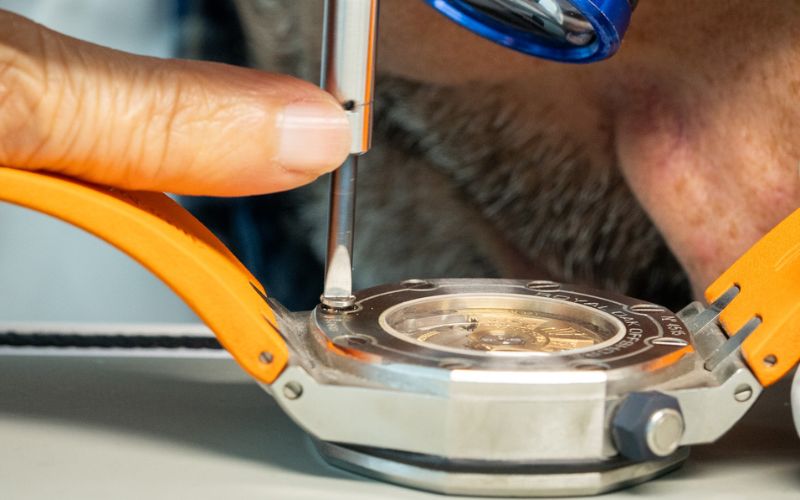What Does “Servicing a Watch” Really Mean?
Before we begin exploring the opportunity of servicing a watch at home, we should understand what “servicing a watch” really means and what it includes. A watch servicing includes opening the case, taking apart the movement, cleaning every part, adding precise lubrication in just the right spots, swapping out worn pieces, and reassembling the whole thing. During this process, the watchmaker also needs to assess the condition of all the parts. It’s a process that mixes engineering skill with a good deal of puzzle-solving and a healthy dose of patience.
Servicing Watches At Home – What You Should Know?
Servicing watches at home is doable, but certainly not easy. If you are ready to learn, stay focused, follow step-by-step instructions, and have steady hands, you might find it rewarding. However, mistakes are very common. From stripped screws, bent hands, to even just a bit of dust ruining hours of work.
Experienced watchmakers often recommend moving slowly and starting with inexpensive, simple watches. For many hobbyists, the satisfaction of tackling a challenging task outweighs the frustration.
But, what could go wrong?
- Irreversible damage to delicate parts
- Loss of water resistance
- Reduction in resale or collector’s value
- Voiding of manufacturer warranties
What Do You Gain?
- Saving money on simpler repairs
- Sharpening fine motor and problem-solving skills
- A deeper appreciation for the tiny mechanics on your wrist
Tools Required
- Precision screwdrivers (with fine tips)
- Anti-magnetic tweezers
- Loupe or magnifying glass
- Case opener that fits your watch type
- Movement holder
- Oilers and proper lubricants (like Moebius oils)
- Dust blower
- Rodico putty for gently lifting particles
Also Read – Watch Battery Replacement Dubai: Check price, details
Starting with Watch Servicing at Home
Now that you have understood the risks and gathered the tools needed, you can begin servicing watches at home. However, before you begin, you should create a safe, clean and organized work environment. You will require bright, focused lighting, and even need some finger cots to protect both the movement and yourself. Once everything is sorted, here’s what you need to do.
Do Your Homework
Identify your watch’s movement number. You can either find the number on the movement or you can simply type in the reference number of your watch on Google and it will help you get the movement number. Find step-by-step guides, diagrams, or even teardown videos that match your model. Community forums and YouTube channels can be lifesavers. Also, we are in 2025 where ChatGPT or Gemini can come in very useful as well.
Disassembly
Open the case with the right tool, remove the crown and stem, and gently extract the movement. Remove the hands and dial carefully while you systematize each step with photos so you don’t lose your place.
Cleaning Parts
Soak metal pieces in approved watch cleaner or high-purity isopropyl alcohol. Use a soft brush for fragile or painted bits. Check everything with your loupe for hidden grime or wear.
Lubrication
Apply the right lubricants to the precise spots shown in manufacturer diagrams. Use minimal oil as over-oiling can damage the movement more than neglecting it.
Reassembly and Testing
Reverse your steps using reference photos. Test every moving part as you work. Once re-cased, let the watch run a while and use a timegrapher if available to fine-tune the timekeeping.
Also Read – Is Your Watch Magnetized? Symptoms and How You Can Fix It
Will it be worth it?
At the end of the day, this is not really about saving the money. It’s more about developing a hobby and building a skill. It could be worth it for cheaper ETA movements that are rather easy to replace if something goes wrong. But should you be doing the same with a Rolex or an Omega movement? Absolutely, no. Sometimes, even one broken part on these movements can cost thousands of dirhams to replace.





